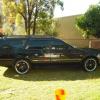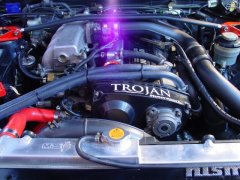What Boost Control Are You Using?
Announcements
-
Similar Content
-
Latest Posts
-
I've watched some vids and the technique seems to be to butt the sheets up to one another and use MIG to spot weld and slowly fill in the spots until its eventually all sealed. No runs as you would normally do, as there's too much heat generated that way. Yeah my stick welds are terrible these days because its been so long since i've done any of it. I expect to be spending many hours practicing
-
By joshuaho96 · Posted
I have personally seen a Tomei USA RB26 cam that didn't even fit the head. Kind of nuts to me that it was even possible for that to happen but such is life. There's two UP Garages in the US. One is a US branch of the Japanese company which sells things they brought over at tremendous markup. The other is University Place Garage/Fairlady Motors which is a shop best known for putting VCAM in RBs and trying to convince people to stop putting in 800hp of turbo on a 2.5L motor. -
Gasless MIG is not exactly suited to what I would call "delicate" or "attractive" welding. So I would rule it out for sheet metal rust repair type stuff, unless you're only doing it in hidden places. I'm thinking about getting myself a gasless MIG for "hack together" type work. Noting that my welding experience is very very low, and quite a long time ago. So I'm also looking for "simple", but I'm not expecting "excellent". I'm not even sure that proper MIG is the best for sheet metal work. I get the feeling that the degree of control and the minimisation of heat input that you get from TIG is probably what you really want. And then you have to get good at doing it before the welds won't look like a monkey flinging a handful of shit anyway. You're probably SOL for an easy and cheap way to get from where you are to where you want to be. Much like myself.
-
Any recommendations for what would be the easiest welding type to start on, for sheet metal rust repairs and maybe some exhaust piping too? Seems like MIG is the most common. Would gasless MIG be ok to learn on and do some simple jobs? I have a stick welder which has a Lift TIG setting, but i'm more interested in getting whatever's easiest to do, and most suitable, rather than using what i have.
-
By Dose Pipe Sutututu · Posted
Is the UP Garage in the US of Ayyeee even the real UP Garage?
-







Recommended Posts
Create an account or sign in to comment
You need to be a member in order to leave a comment
Create an account
Sign up for a new account in our community. It's easy!
Register a new accountSign in
Already have an account? Sign in here.
Sign In Now